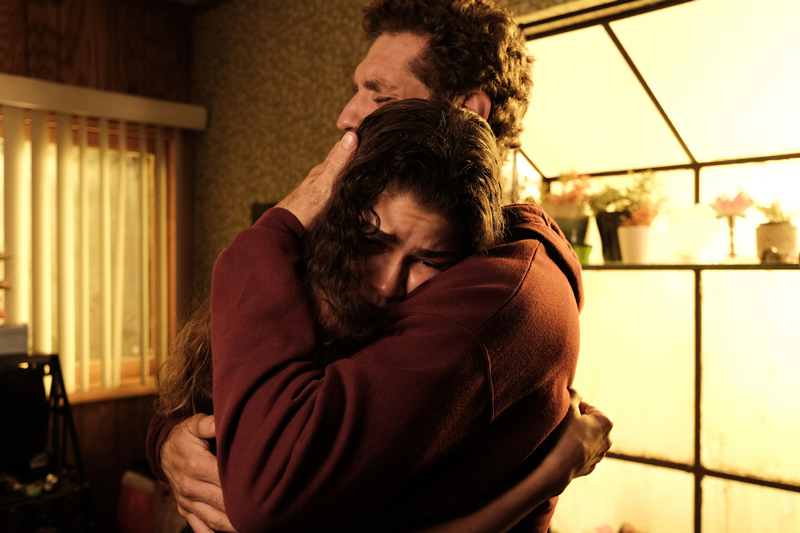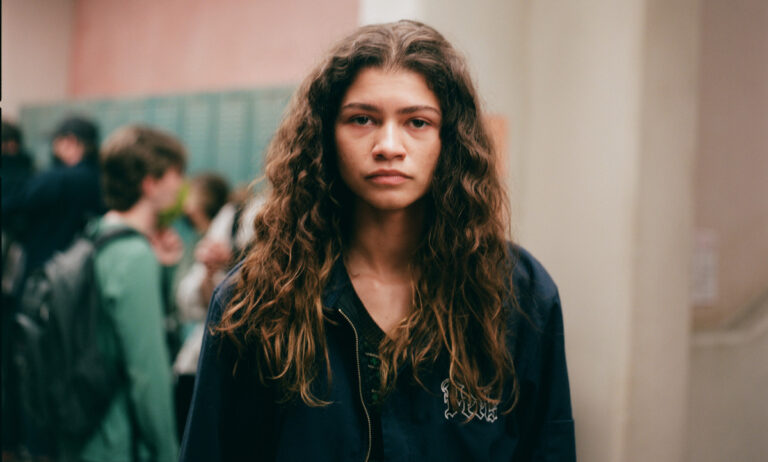I have a theory as to why ‘Euphoria’ is so unrealistic: it’s Rue’s drug-addled memory
Now, I’m not the biggest Euphoria stan in the world—after all, I do have my very valid criticisms of it. The writing this season has scarce nuance, believability, what appears to be absent structure, is far too two-dimensional and woefully problematic at times. Don’t even get me started on the concerning rumours and comments making rounds about the show’s creator, Sam Levinson. For many watchers across the web, the show lacks depth, actual character development and relies too heavily on crass, unnecessary nudity that fetishises high schoolers. Not to mention swathes of followers find it wholly ‘unrealistic’.
The complaints are largely levelled against Levinson as he is the show’s writer, with The Daily Beast citing previous reasons as to why fans first turned on the HBO series. Regardless of whether you agree or disagree, there is complete validity in those analyses. It is always important to cultivate critical thought when watching our favourite TV shows and movies—looking at the impact some of these creative decisions can have on the people watching them. I could write endlessly about these criticisms as I too, see them and believe them, particularly in the analysis of Euphoria’s dangerous sexualisation of, what are supposed to be, minors.
However, today I’m trying to find a different take among the many being made—which have often been mostly negative. Though I agree with the critique of Levinson’s at times questionable writing, and I’m in no way defending his choices, I do still have an attachment to the show—particularly Rue’s difficulty in coming to terms with her father’s death, an experience I know too well. Plus, there are some iconic one-liners and I’m obsessed with Alexa Demie and Barbie Ferreira. So, in an attempt to see a deeper meaning in an aspect of the show, I have a theory as to why it seems so incredibly unrealistic.
A drug-skewed narration
When the unrealistic nature of Euphoria is discussed, it is often about the nature of the subjects mentioned—meaning the lives of the teenagers we follow in the story. We all say to ourselves, ‘Me at 16 was a totally different picture’. Another factor—perhaps the one that keeps audiences coming back for more—is the aesthetic: iconic fashion and makeup, stunningly beautiful cinematography and the haunting soundtracks of the show’s resident composer Labrinth is enough for you to be drawn back in.
I think that both these elements are influenced by Rue. Think about it, she’s the narrator. A large chunk of the show is written and detailed through her eyes. In fact, she stated in the very first episode of season one that she is not the most reliable narrator, and even Levinson doubled down on this aspect stating, “Rue’s perspective is very much Rue’s perspective, and she’s not always accurate in her retelling of things.” There are elements of the show where Rue imagines things as they would have happened, but didn’t actually. An easy example of this is Cassie’s recent viral meltdown in the school toilets about her outfit, she screams about her relationship with Nate (a secret not yet out in the open) but then it is revealed that she doesn’t actually say anything. It was Rue describing what she thought Cassie would have wanted to say at that moment.

And of course, let’s not forget that Rue is addicted to drugs. Her version of the events are not just biased but affected by her drug abuse. Therein could lie the answer to the unrealistic nature of the show—the situations that arise may be a result of a still drug-addled future Rue, who is describing the warped memories of her past. Maybe Ashtray wasn’t actually 10 years old or maybe there wasn’t so much nudity and explicit activity—we can only hope. It’s safe to say whether this theory has merit or not, it won’t be enough for Levinson to get away scot-free.
We’ve already seen short-hand versions of this and how her momentary highs are depicted. The most viral is the ending scene of the first season in the segment ‘All For Us’. The absolutely brilliant song married with a musical ensemble of dancers, that symbolised Rue’s relapse, was the making of a monumental finale. These obscure, magical scenes—take the latest ‘Lover Montage’—are often more rooted in artistry than they are in reality. It wouldn’t be too far of a stretch to assume, therefore, that this spans the entire show (or most of it, at least) as a representation of an under-the-influence storyteller.
Another element is that she’s really the only one who doesn’t dress as overtly as the rest of the female characters. Apart from a few rare examples, Rue is often seen sporting dark, mid-range colours like brown and the infamous burgundy hoodie. Could this be another nod to the fact that she, herself, is rooted in reality while her surroundings are a result of hallucination? Possibly, since it’s technically not the present if she’s narrating it. Her narration could all just be one really long high.
While writing this, I felt like it reminded me of something. And it did: the Friends fan theory about Phoebe Buffay. Need a refresher? Well, the theory/fan-proposed alternate ending is that Phoebe is actually homeless, stoned and imagining the five people in the café—Joey, Monica, Ross, Chandler and Rachel—as her friends. Depressing, right? Perhaps there is no real truth to this Euphoria theory but it does make for a more interesting watch, whether you like the show or not.





